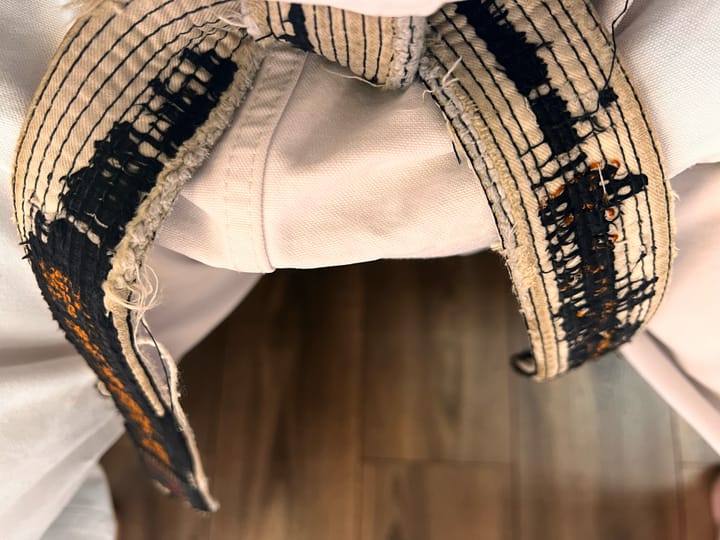Yansu Kata is a tour-de-force in the study of balance. Yansu is an old and somewhat rare kata that has enjoyed a resurgence in interest.
Yansu (sometimes written as Yantsu) means “purity” — literally, the kanji means “the three safe(ties)” and refers to the concept of purity in Asian philosophy (more specifically, “The Three Refuges” are to take comfort in community, philosophy, and a belief in the greater good — these are the keys to happiness and satisfaction in life).
It is possibly the kata with the murkiest history and background, and is a relatively rare kata. It is usually a kyu-belt kata, but it also exists as a dan-level kata in some styles of karatedō.
Origins
The kata is of a Southern Chinese (most likely White Crane) origin, but wasn’t formalized until the early 20th Century and is considered a “naha-te” kata (of origin from the city of Naha, Okinawa).
The name was, according to the history of the times, chosen by an interesting figure in the history of karatedō: Go Kenki. Specifically, Yansu Kata is named for a minor village in Fujian (in southern China). Today, there still exists a township administrative unit (effectively, a group of small villages or provincial section) called Yancuozhen in Fujian, China.
Go Kenki is an interesting figure in the history of martial arts, and Goju Ryu in particular.
Originally from a Chinese merchant family (in Chinese, his name was Wu Xianghui 呉貴賢), Go Kenki was born in Fujian Province, China, on January 20, 1886. He emigrated to Okinawa in 1912, and opened a tea shop and business named Eiko Cha Ko in Naha. A few years later, he would become a Japanese citizen (and marry a Japanese woman).
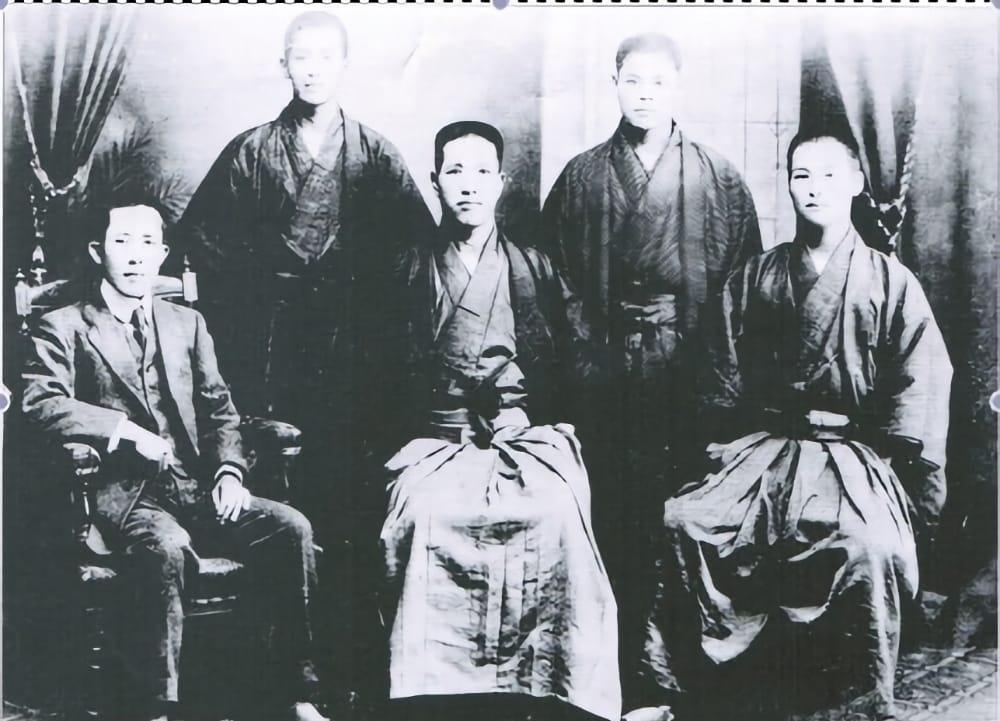
Go Kenki was a life-long student of the martial arts, and he taught a small number of students in the tea shop that he had (seven, according to the records of the time).
However, he wasn’t interested in teaching or in the creation of a school; rather, he was quite scholarly in his pursuit of different aspects of martial arts, and while he focused on various forms of Chinese White Crane and allied forms of martial arts, he had a curiosity about most systems, styles, and philosophies of fighting.
Go Kenki was very well-respected in the Okinawan karatedō community of his time, and spent the rest of his life in Okinawa. (At his death, in 1940, his family moved to China, and eventually his daughter, Ho Sechi Mosumai, helped establish a school of White Crane-style martial arts in Taiwan).
Go Kenki was a close friend of Chojun Miyagi, the founder of Goju Ryu, and had a deep influence on him and a number of different aspects of Goju Ryu karatedō. The first meeting between the two occurred sometime between Miyagi’s return to Okinawa from military service in November 1912, and their first trip together to southern China in May 1915.
Their friendship and collaboration was deeply informal; Chojun Miyagi came from a formal tradition of student-teacher, master-pupil, but Go Kenki did not (at least, not by the time that he was in Naha). But Go Kenki was an enthusiast about all things martial, and Chojun Miyagi was similarly a student of the martial arts.
Their mutual enthusiasm sparked many training sessions together, along with other prominent karateka of the time in Naha. As an example, the use and applications of tensho techniques (tensho uke, etc.) likely were something that Go Kenki brought to the discussion of martial arts.
Miyagi was in a very formative phase of his training; while he had studied under, and considered as his sensei, Higaonna Kanryõ, he was examining the most basic of kihon and considering details in light of all the experimentation and exploration. Even in kata, Miyagi was exploring the origins of strikes, and replacing the tate zuki (vertical punches) that Higaonna Kanryō taught with the now more-familiar rotating seiken zuki strikes employed today.
We do know that by May 1915, the two were not only close friends, but co-scholars bent on researching the origins of kata and techniques that had come from southern China, and their first trip to Fujian mirrored the journey of Miyagi’s primary teacher, Higaonna Kanryō, who had made a similar trip almost exactly forty years earlier. In Fujian, they were met by a Nakamoto Eisho, a mutual friend from Okinawa who now lived in Fujian, who acted as their guide.
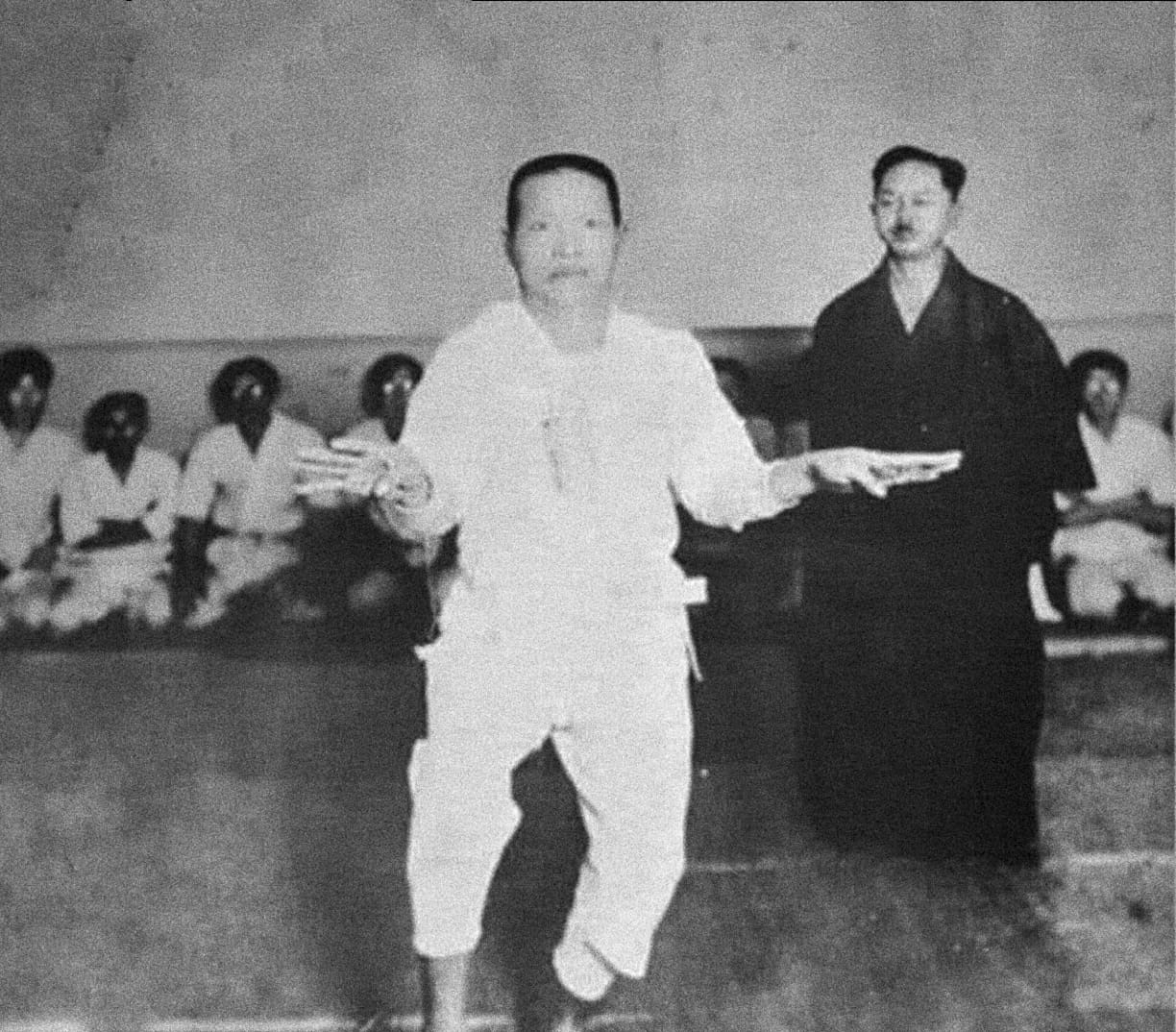
Miyagi and Go Kenki spent a year in China, mostly in Fujian, learning kata and techniques and theory. While they would repeat the trip again in January 1916, once more researching whatever was available to them, it seems certain that this is the time when they were introduced to Yansu Kata and took it back to Okinawa upon their return.
It is unclear whether Chojun Miyagi or Go Kenki formalized the kata; most likely it was a collaboration of both of them, and that Miyagi had it before 1919, when he started formally teaching the kata. So while we do not know who created Yansu Kata, we do know who formalized it and later transmitted it.
But even then, Yansu Kata was considered a kata for more experienced karateka. And because of this, the transmission of Yansu is somewhat uneven in history — there were simply less advanced students who were taught this kata by Miyagi. Go Kenki likely taught the kata himself as well, to other karateka who trained in a number of other styles of naha-te (karatedō).
While less common today, the kata is taught in a number of Goju Ryu schools (directly transmitted by Chojun Miyagi to his son, Sensei Kei Miyagi, who taught it to Gogen Yamaguchi (at Yamaguchi's Asakusa dojo, and possibly to Mas Oyama, in the early 1950s).
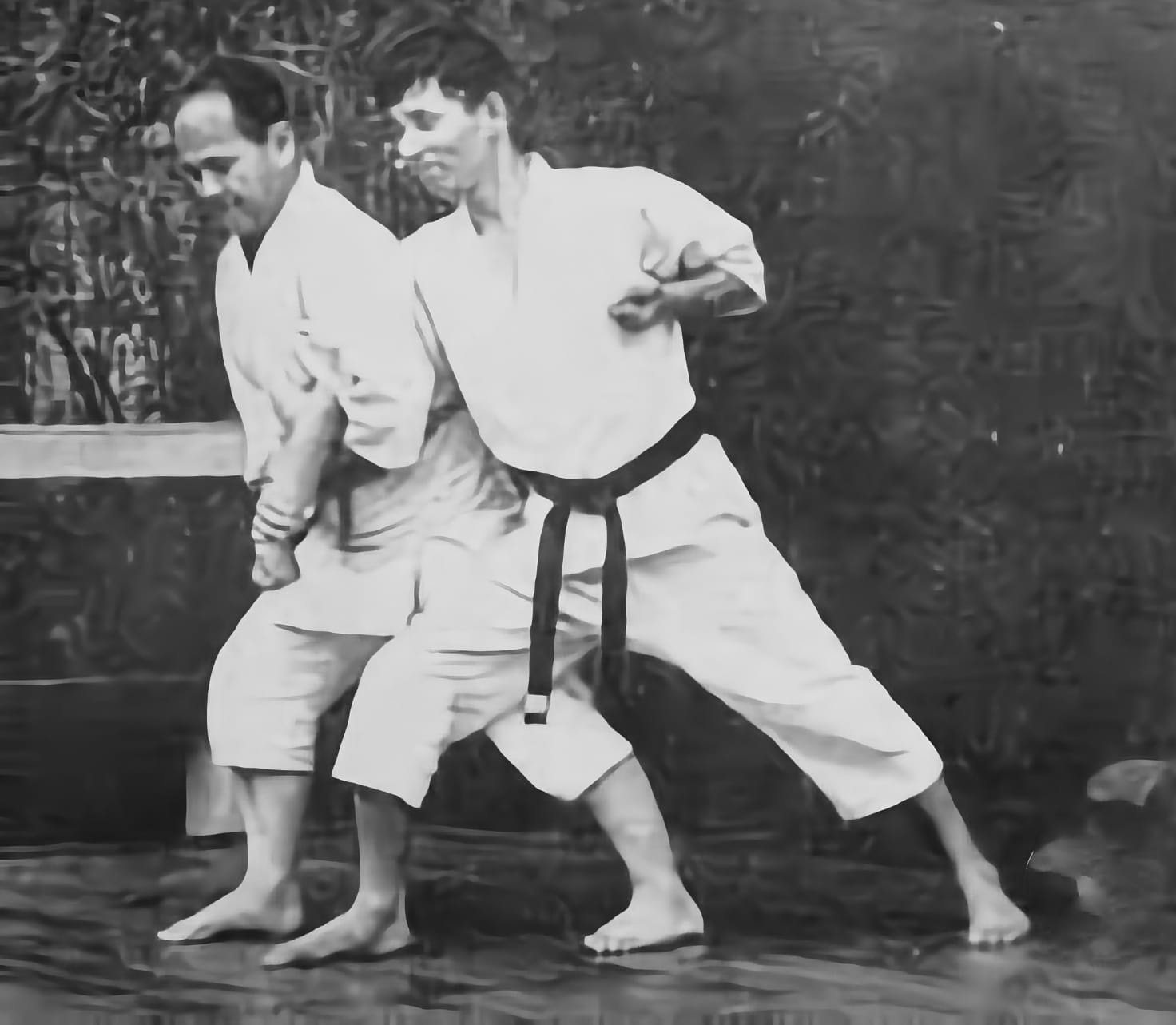
It is also present in Kyokushinkai schools (Sosei Mas Oyama received the kata most likely from Kōsei Kokuba and Motobu Choki or So Nei Chu, a prominent Goju Ryu karateka who was also Korean, and lived in post-war Japan, or from Kei Miyagi), and, under a minor variant named Ansan (this is simply an alternate pronunciation of the same kanji — 安三), is present in most Shito-Ryu syllabi and some Isshin Ryu syllabi.
Kata Notes
Yansu Kata is a study in balance — mostly the manipulation of balance against the adversary but also using your own balance to promulgate the attack.
Consider the first count of the kata. The morote haito can be considered a two handed grab (behind the head or neck of the adversary) and pull forward, unbalancing the adversary right into the morote jodan zuki.
If we combine the first two counts, then the further re-chambering of both hands after the morote jodan zuki results in once again the adversary losing balance as we execute an uraken mawashi uchi (twice, in fact, if we include count three).
Consider also counts 12 and 16; in both, the most common bunkai is to sweep or grab with the outstretched hand, unbalancing the adversary, and puling them into a position ninety degrees to our right or left, respectively. And then of course, continuing the attack with three quick strikes.
And consider counts 8 and 10: in count 8, we move our right leg bag, potentially pulling the adversary off balance, and into our strike; in count 10, we pull our forward right leg back to our line, and do the same on the left.
And lastly, consider counts 14 and 18: we use the mae geri and its return deep behind us as the opportunity to then pull the adversary into our strike.
In addition to the exploration and training in regards to balance, there are a number of unique features in the kata: we spend the first seven counts of the kata in heiko dachi; it is only in the eighth count that we actually move forward.
Because of this, and the overall enbusen of the kata, Yansu is a very compact kata in terms of movement. You can envision the overall geometry of the kata as being roughly “T” shaped, but its a very compact “T”.
Yansu is a mokuso kata, and has ibuki breaths at counts 7, 15, and 19. It also has three ki-ah at counts 5, 13, and 17.
Yansu Kata: The Reference
A reference to the complete enbusen for Yansu Kata is available in the Goju Students section.
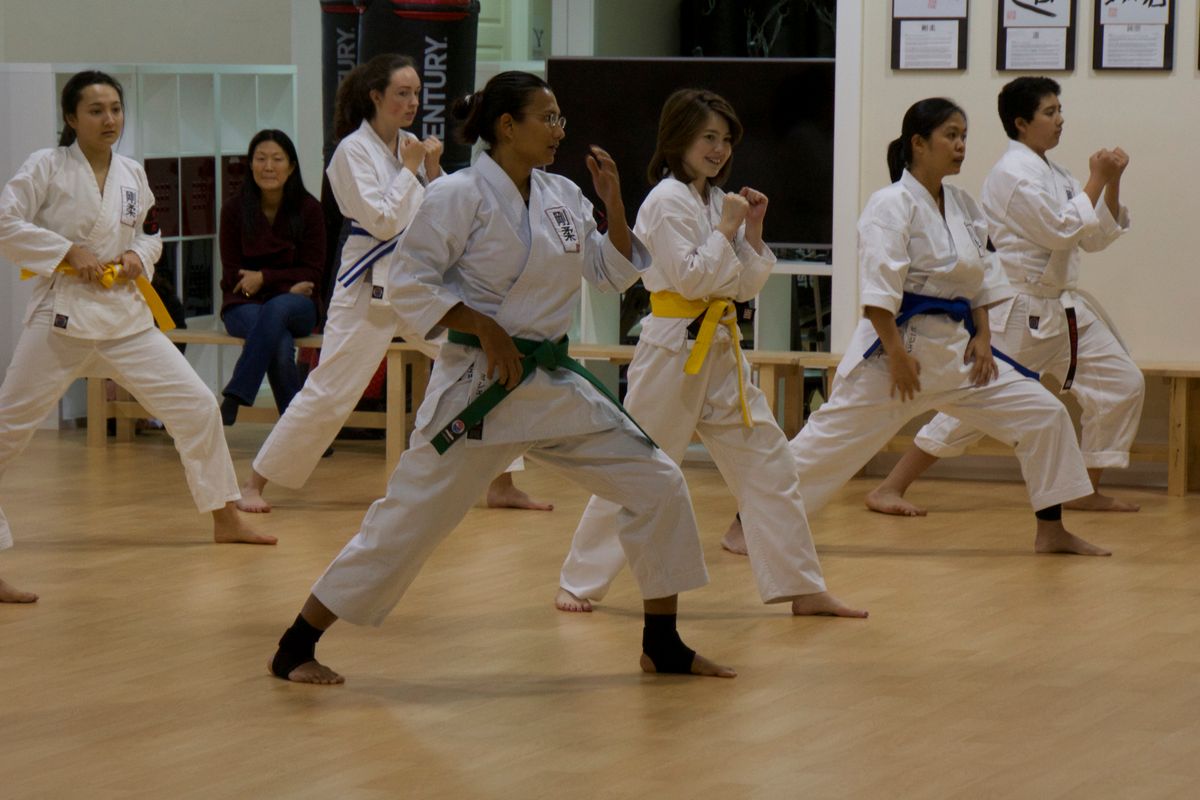
Yansu Kata (and more)





